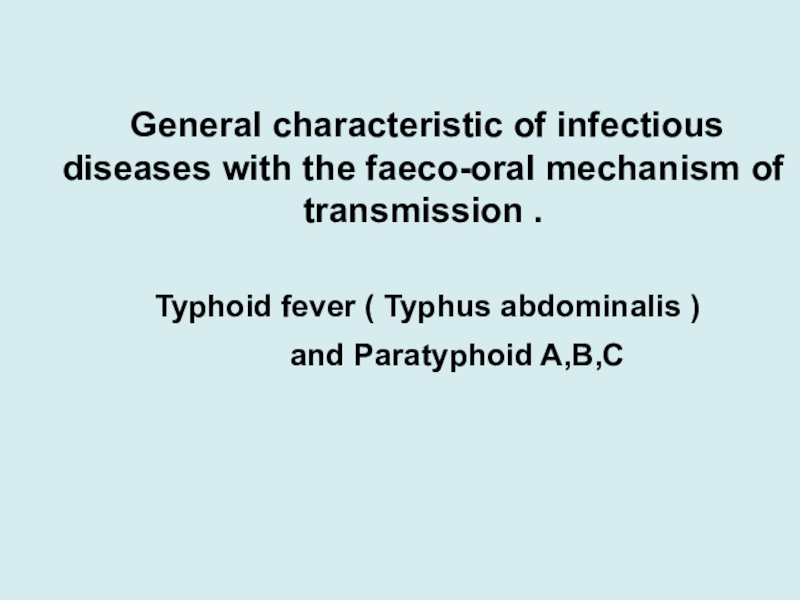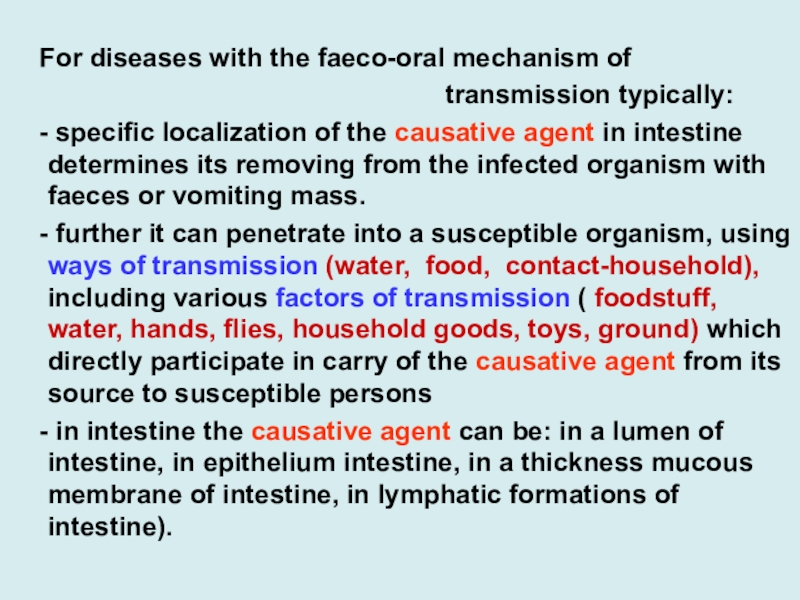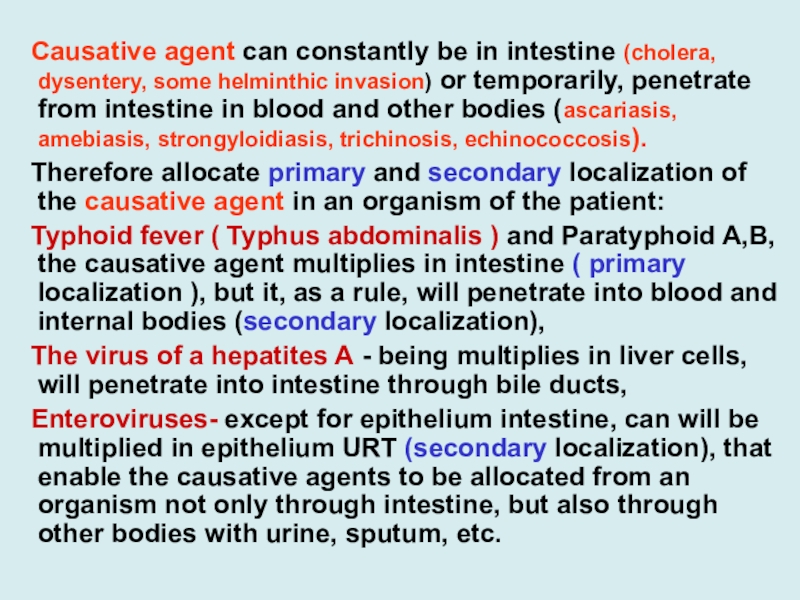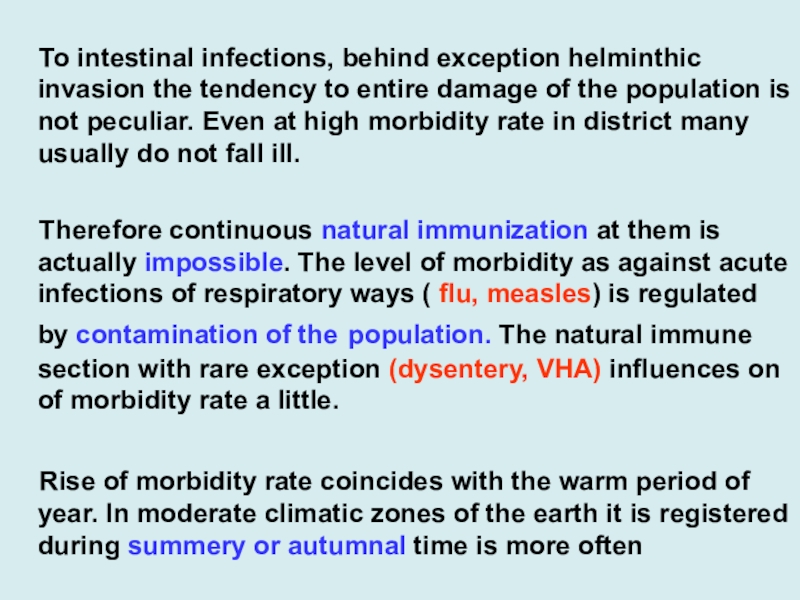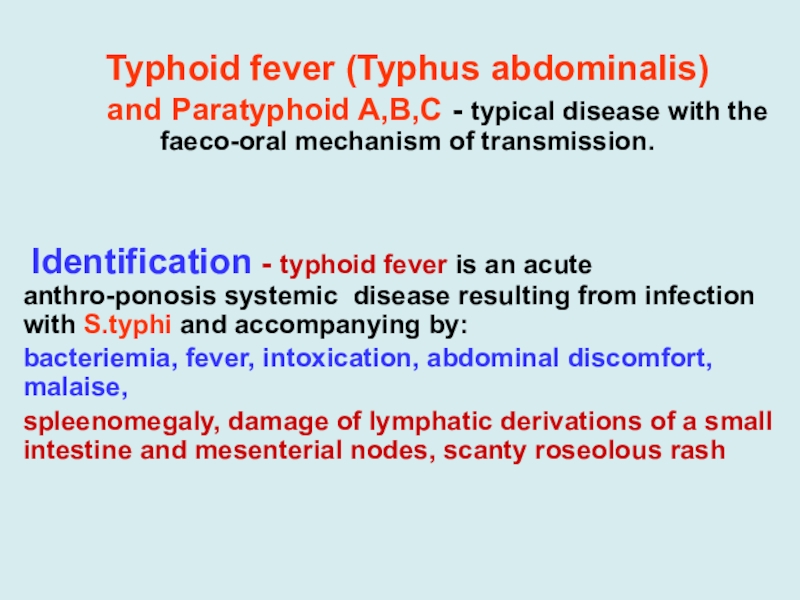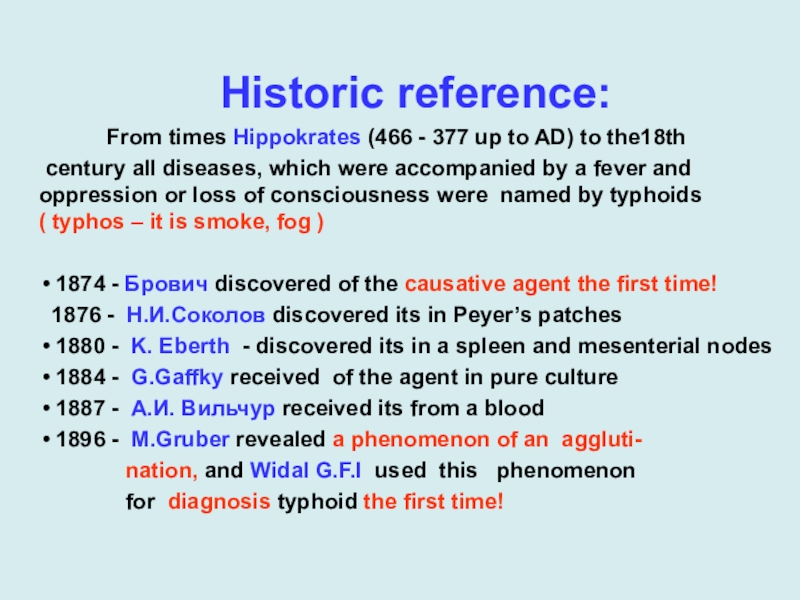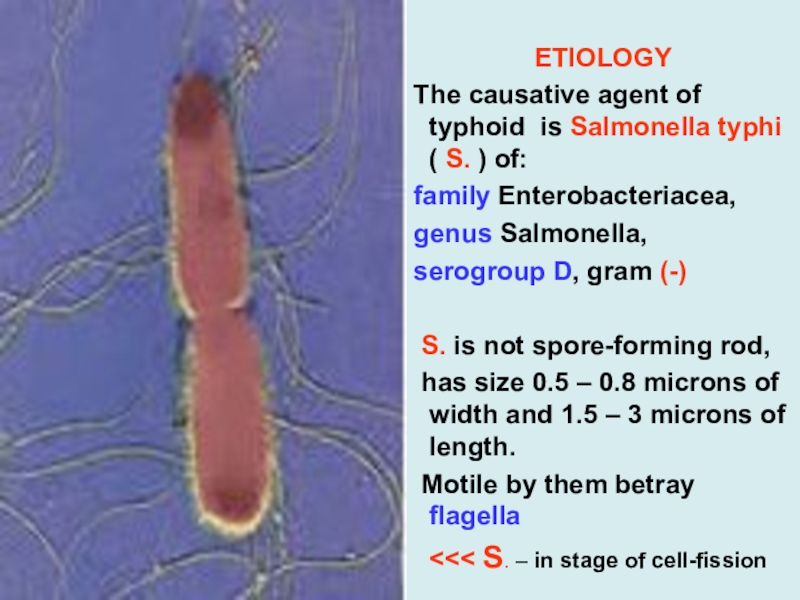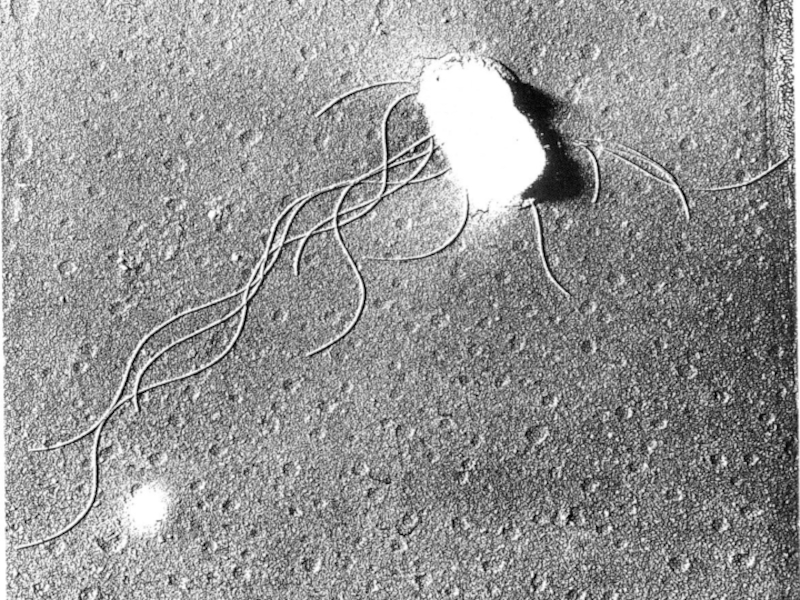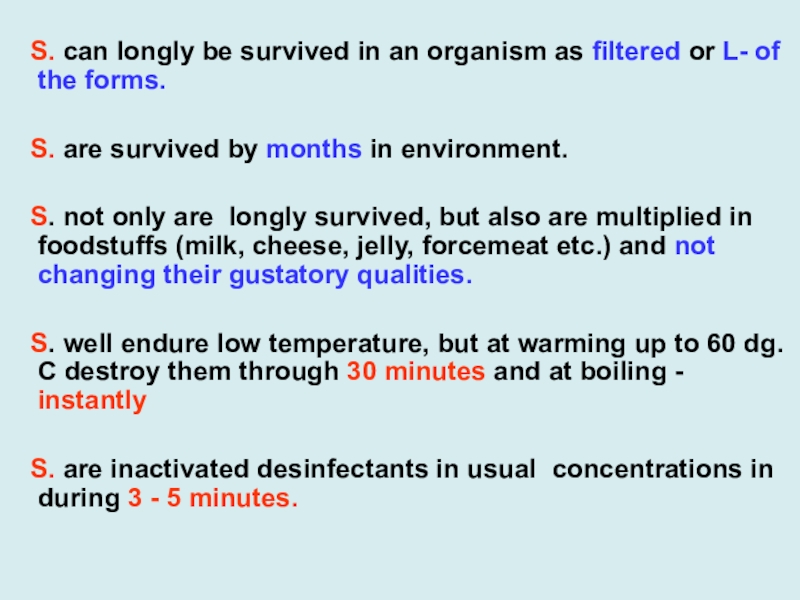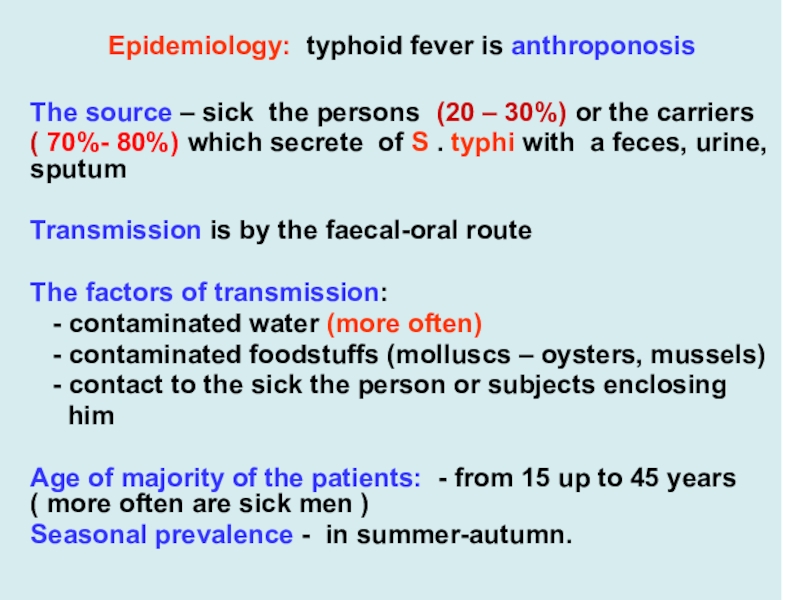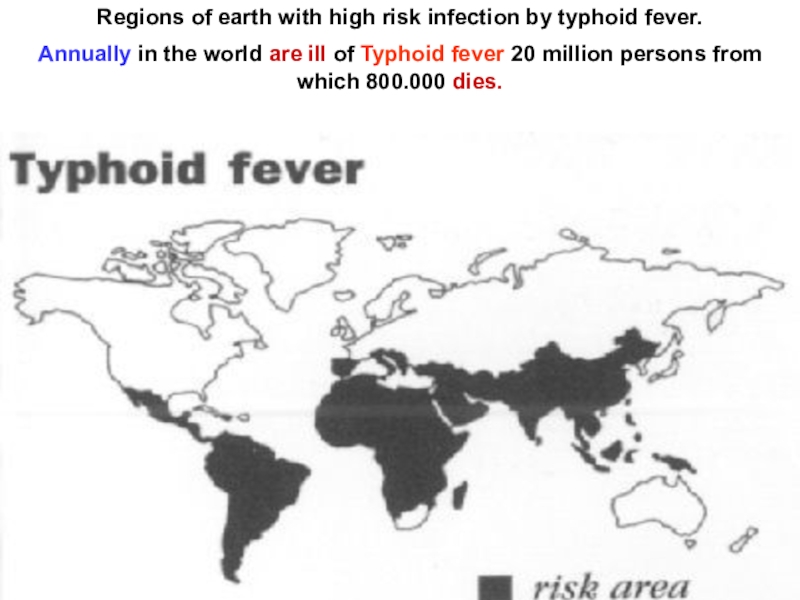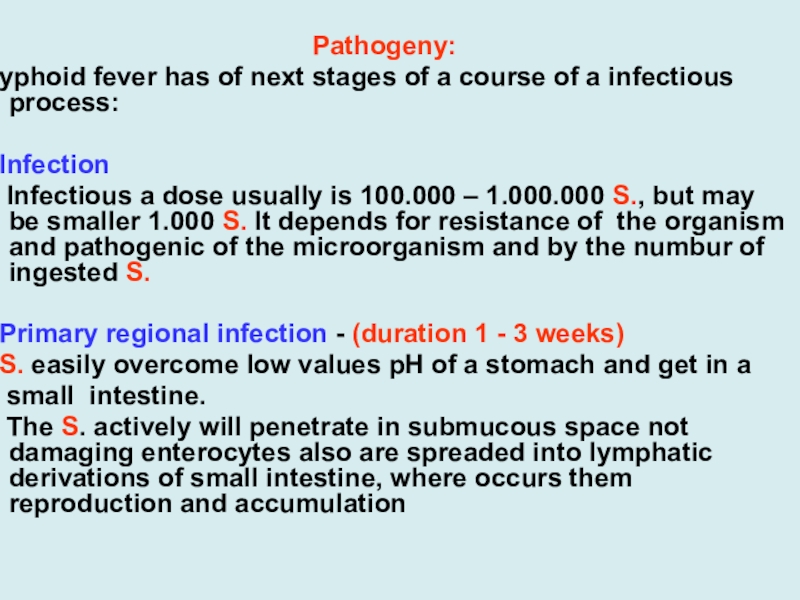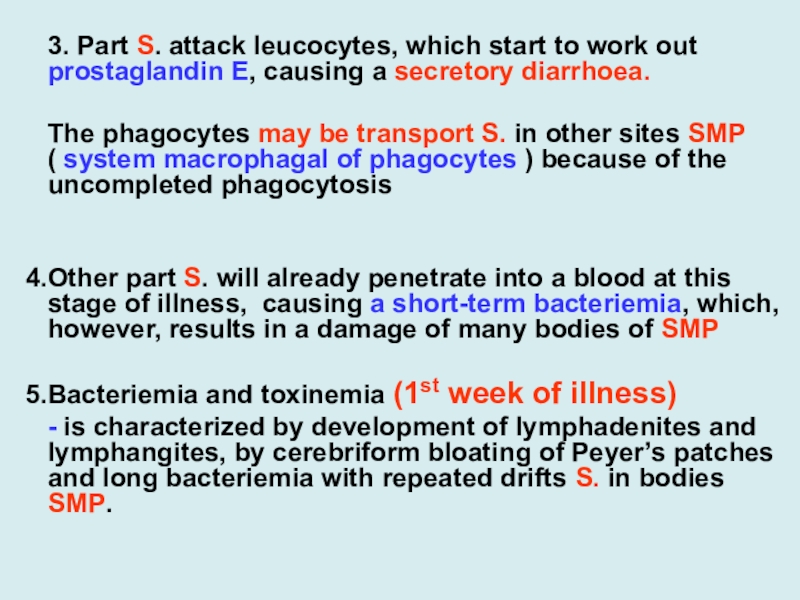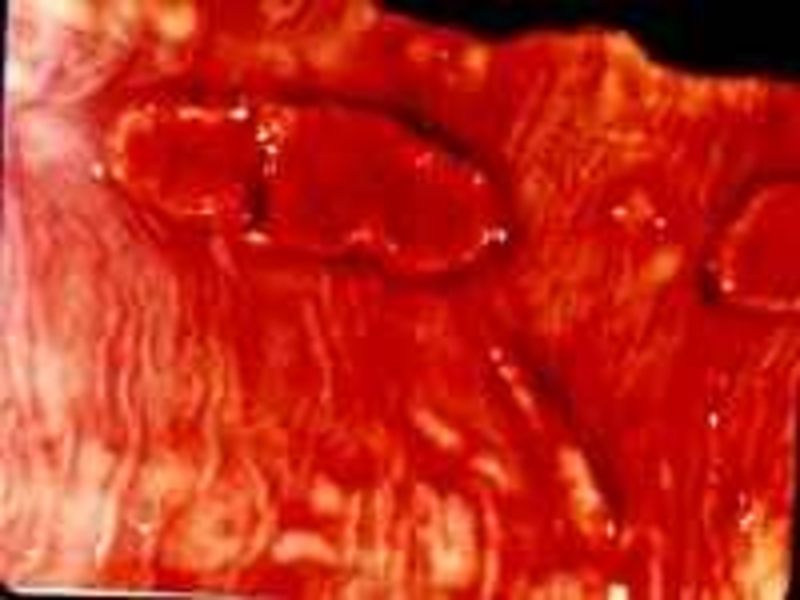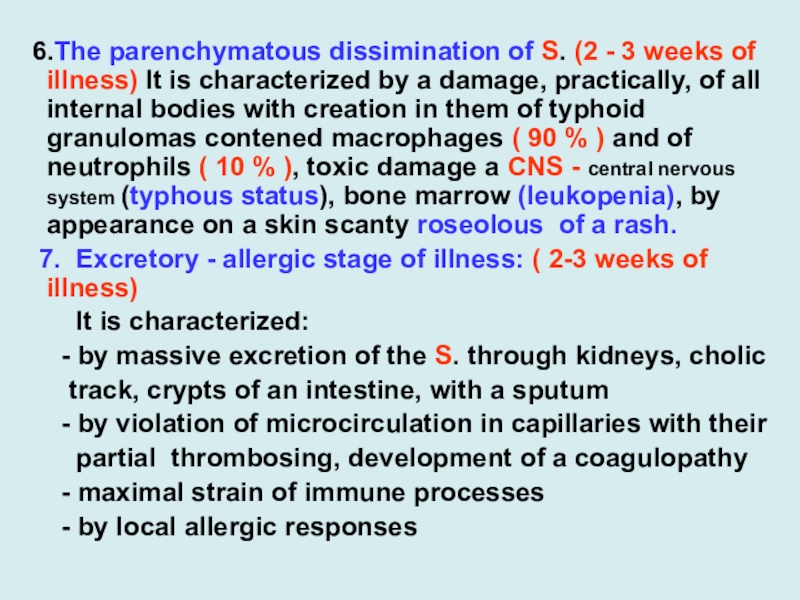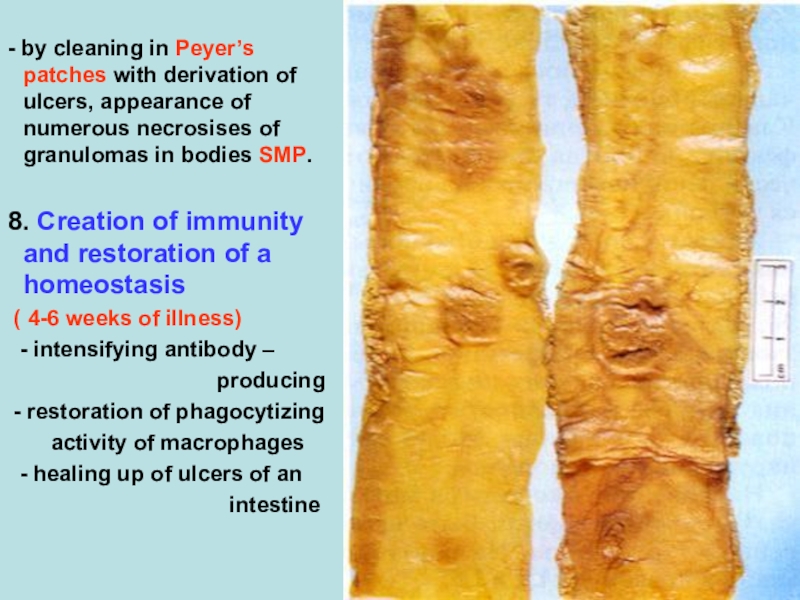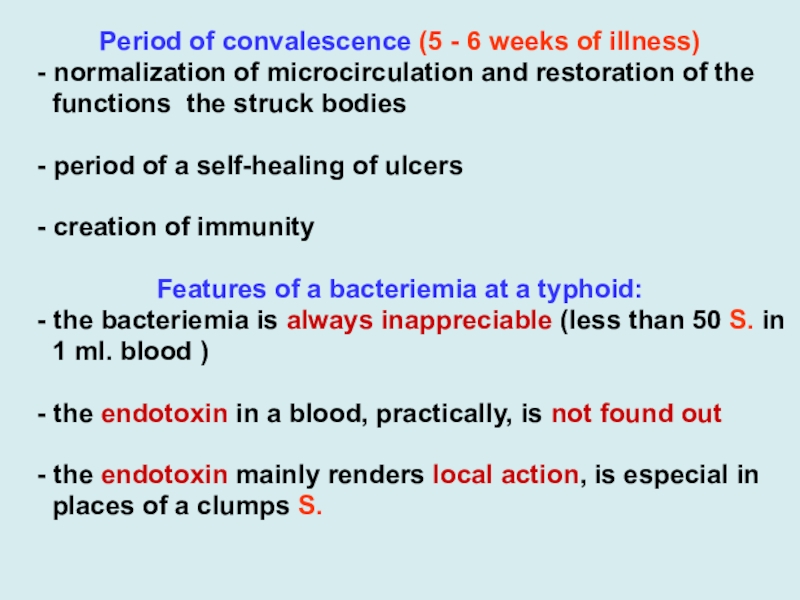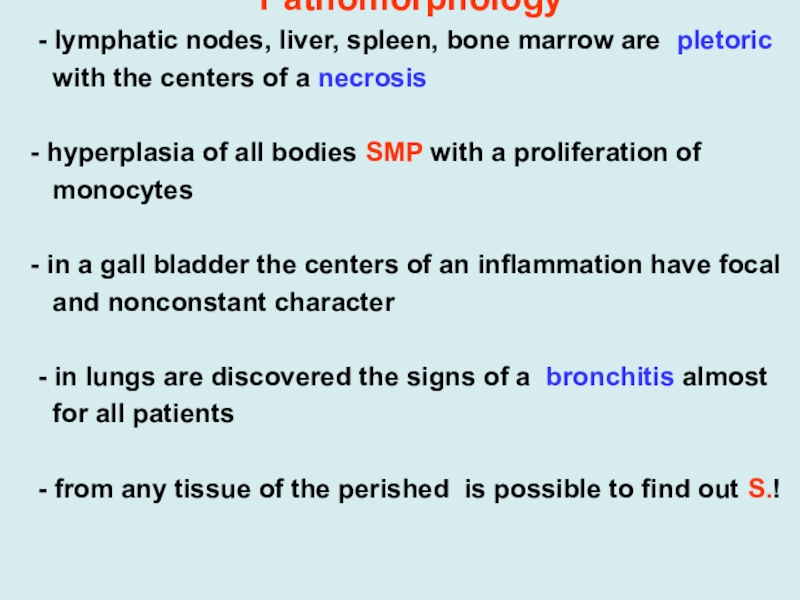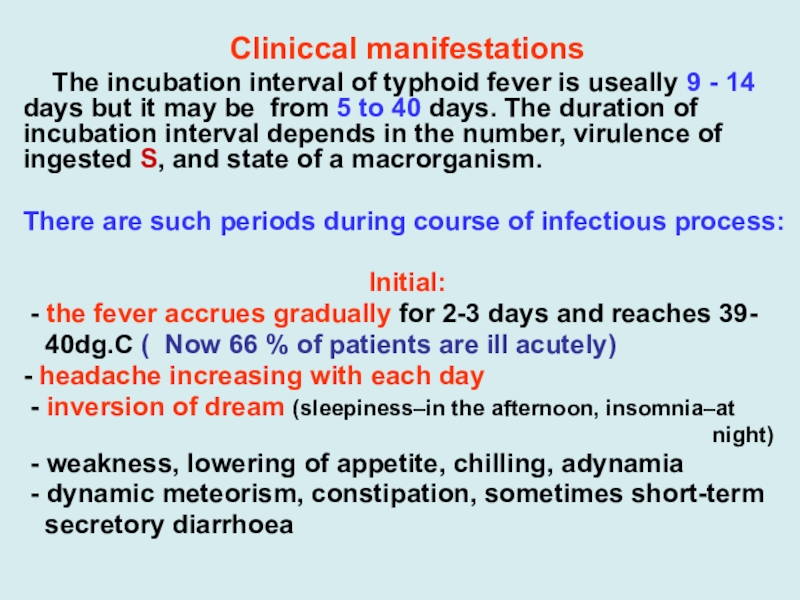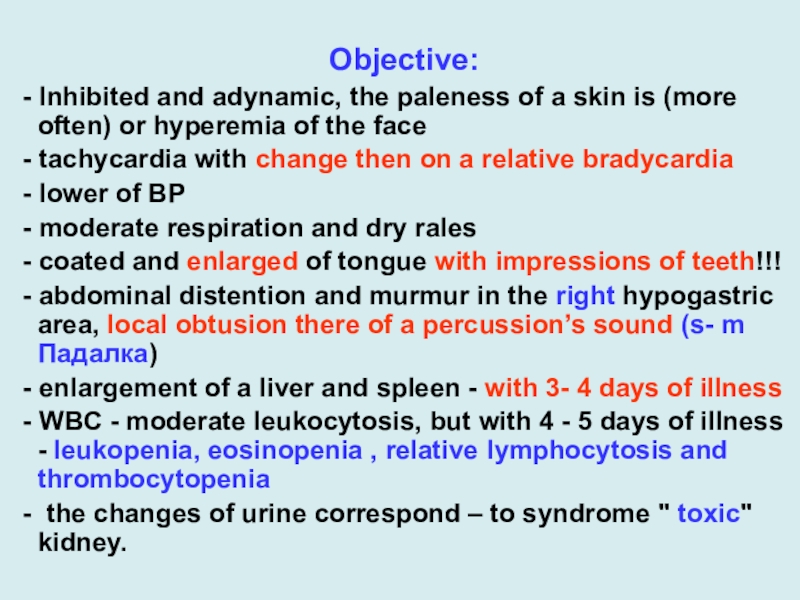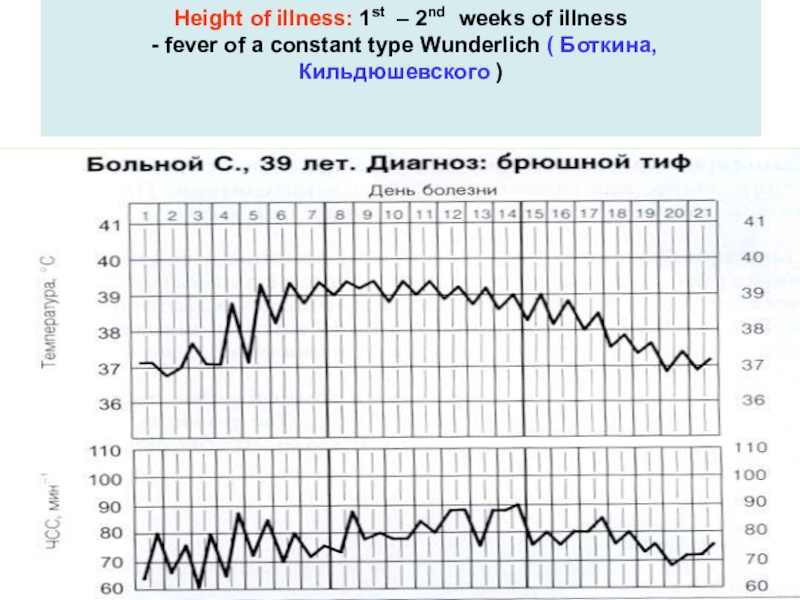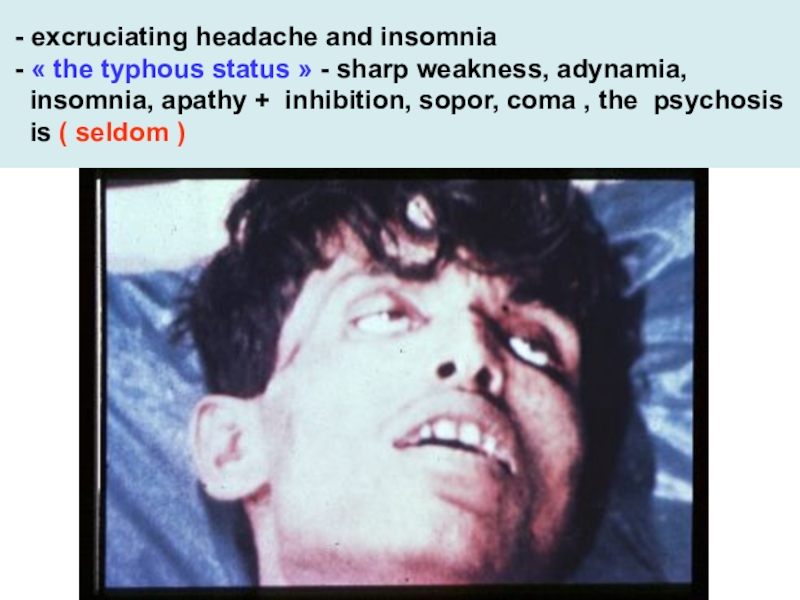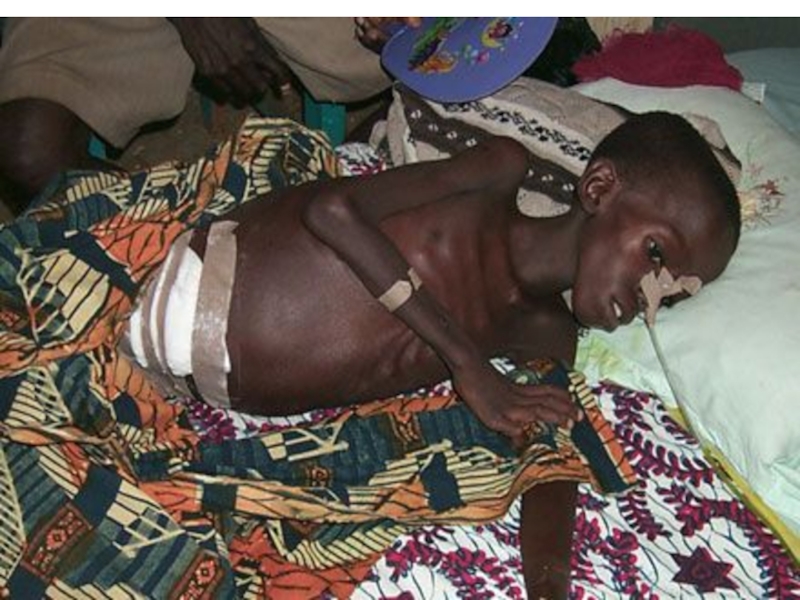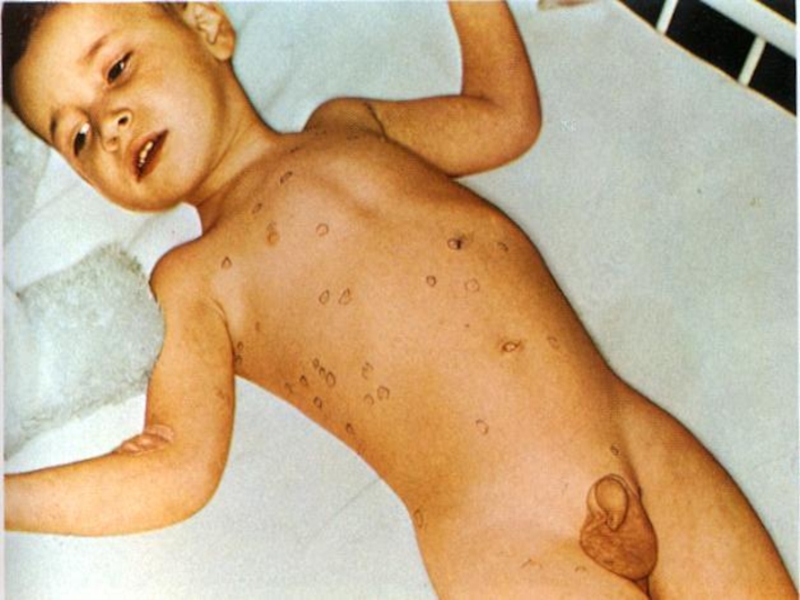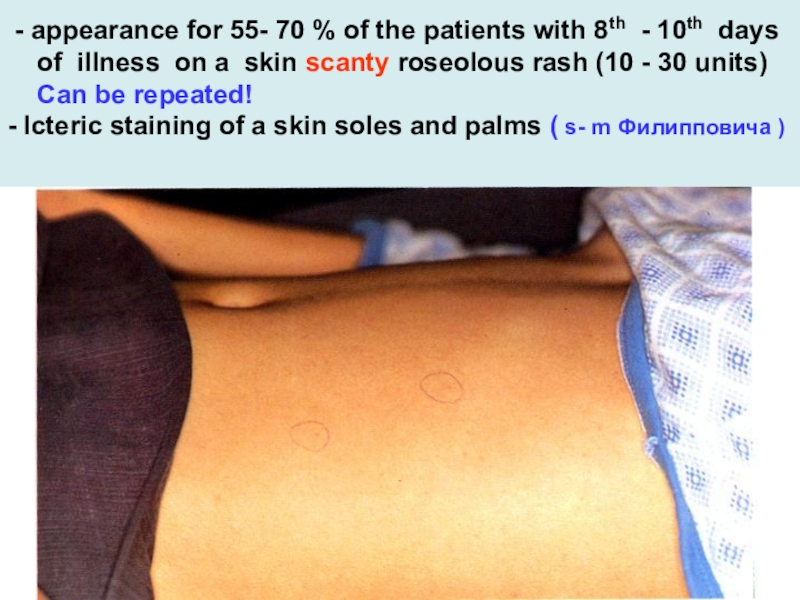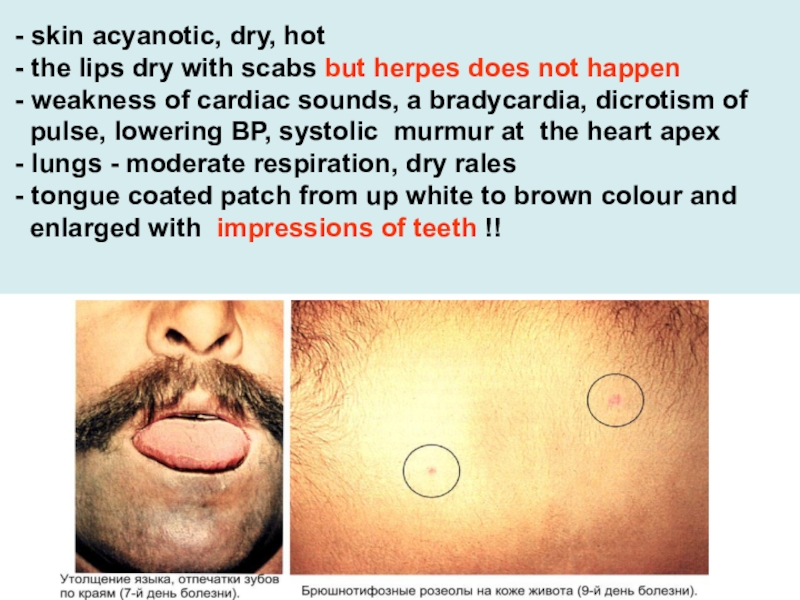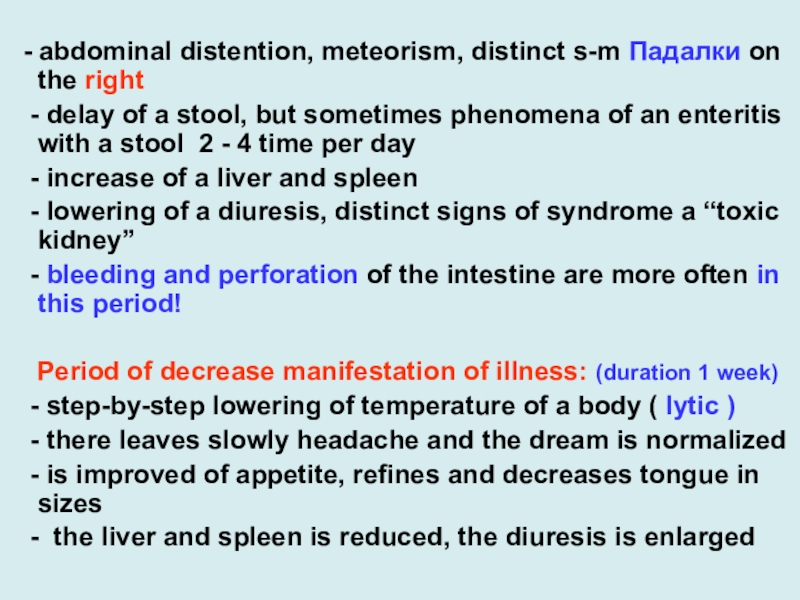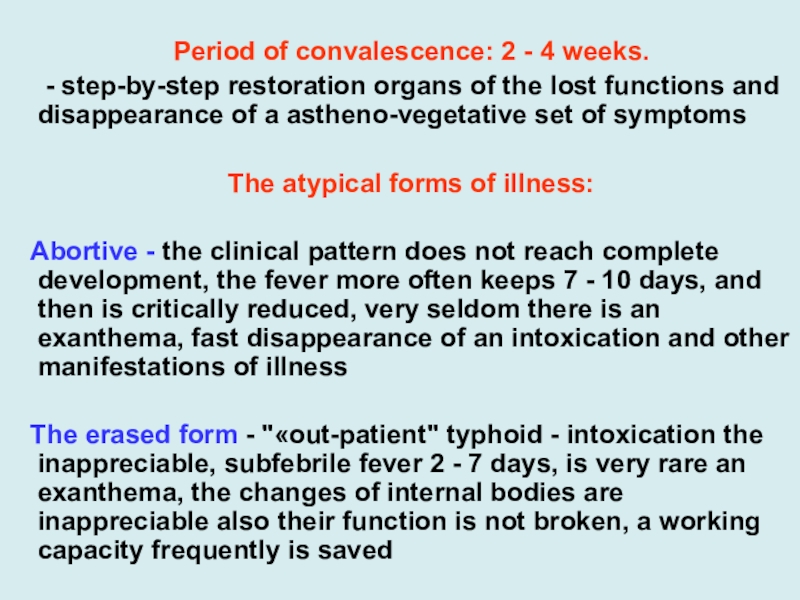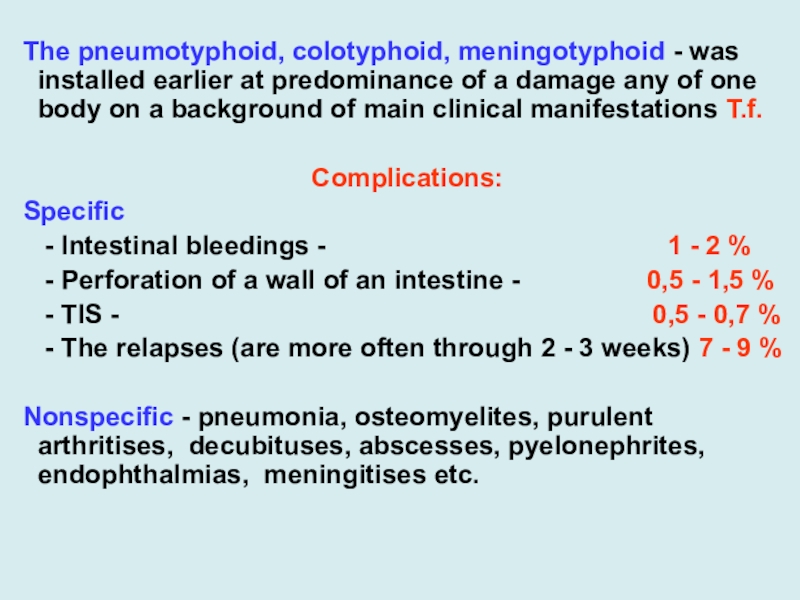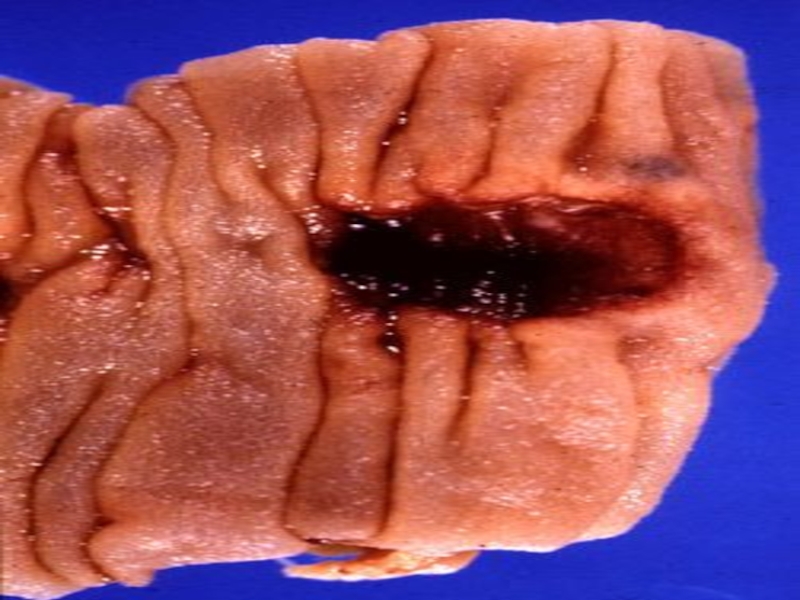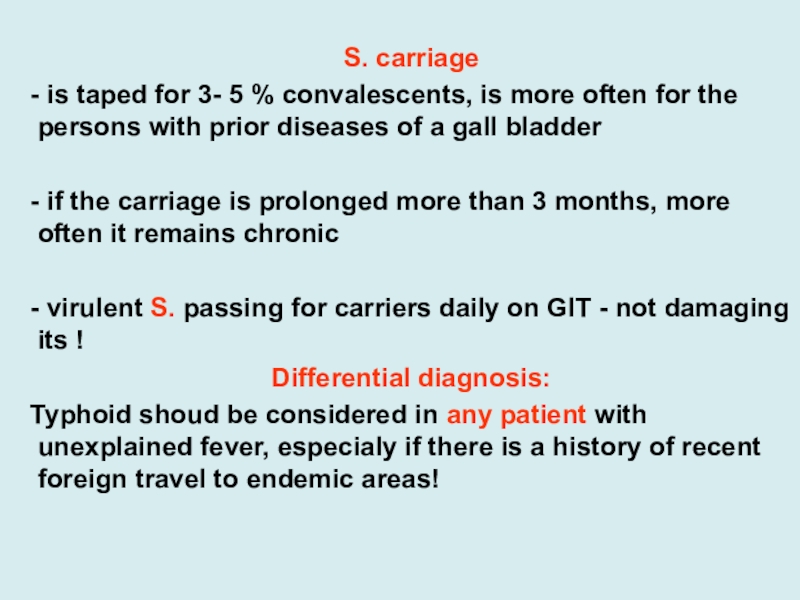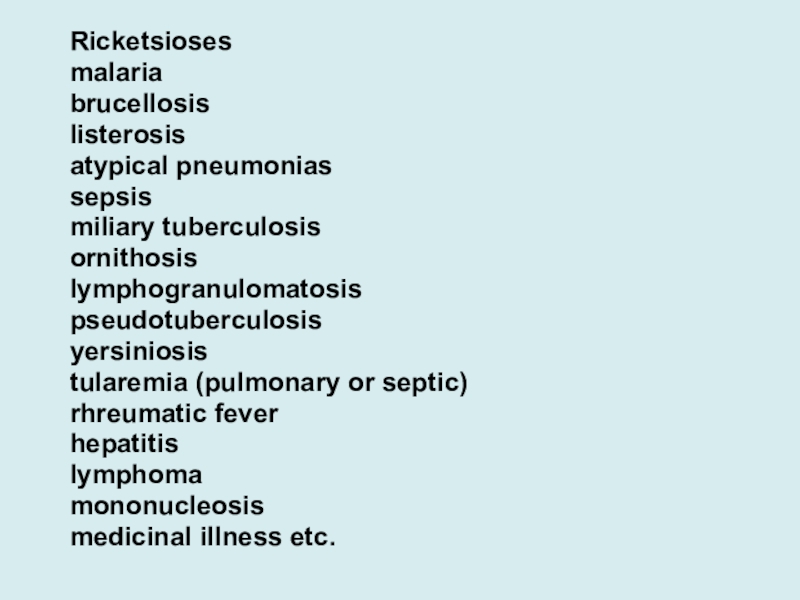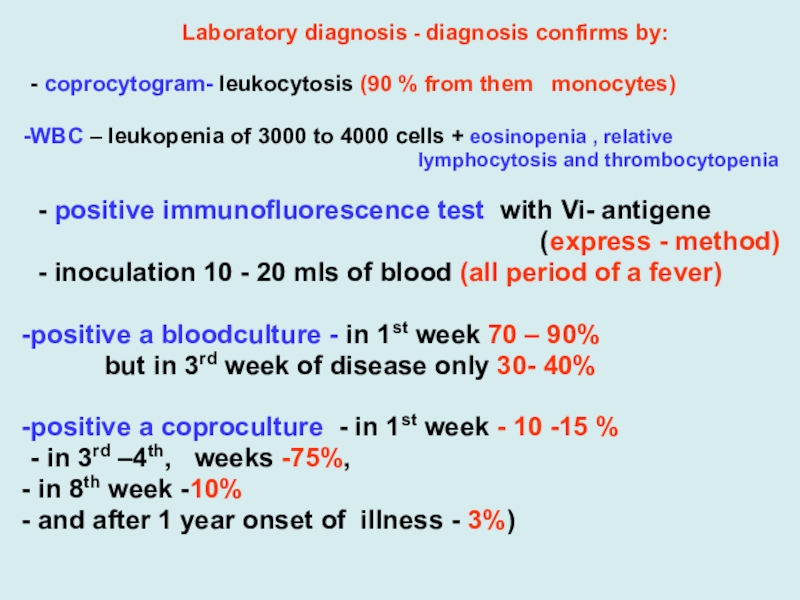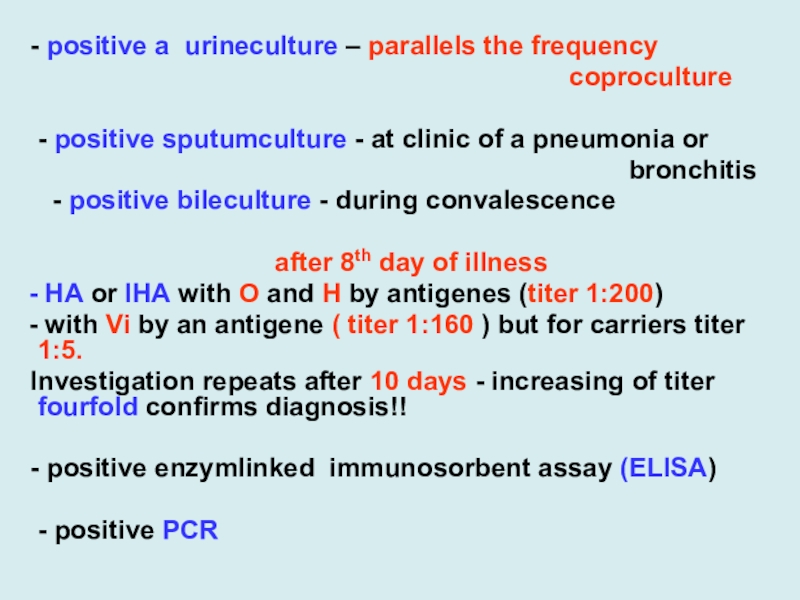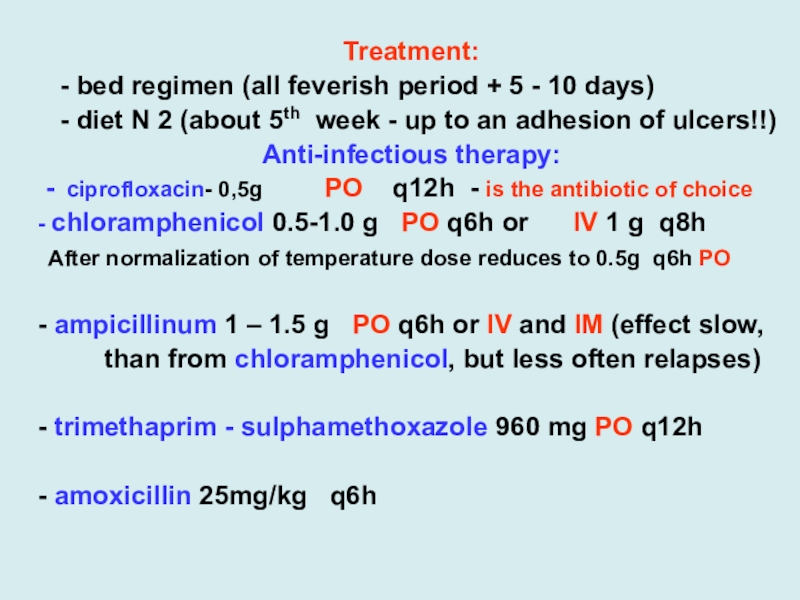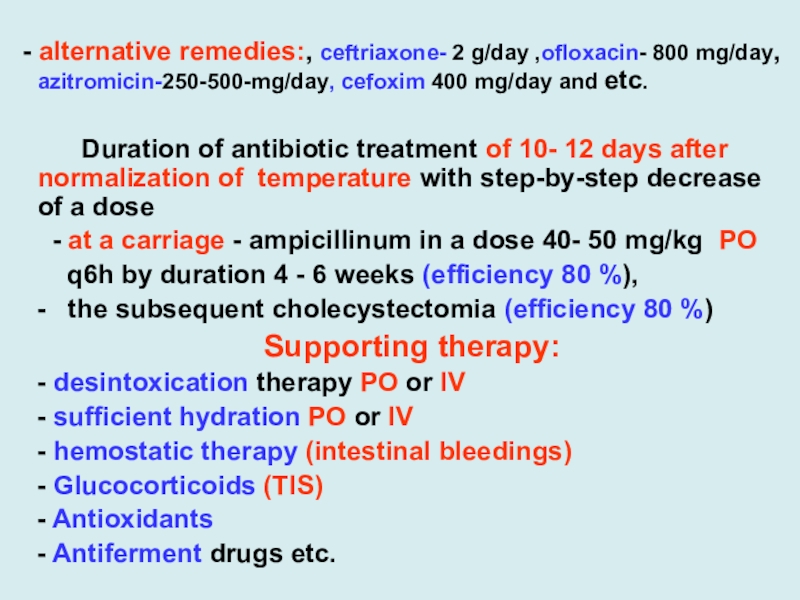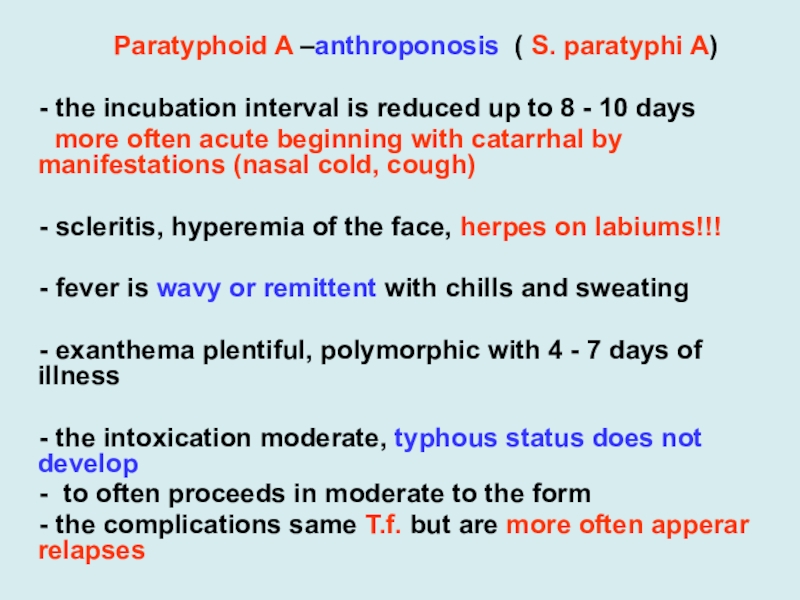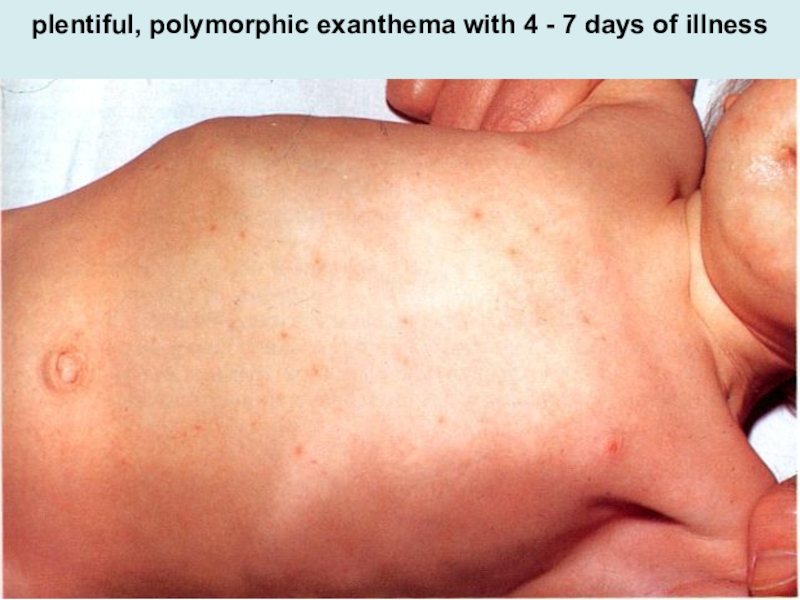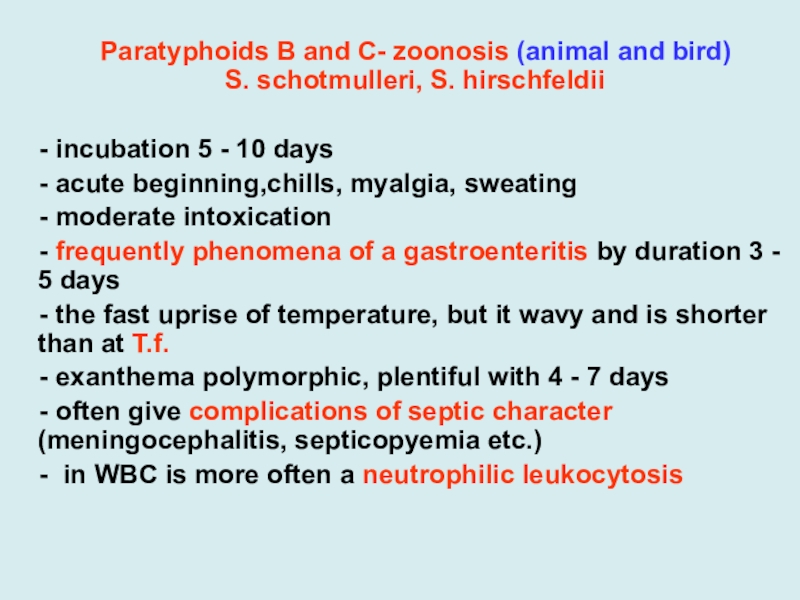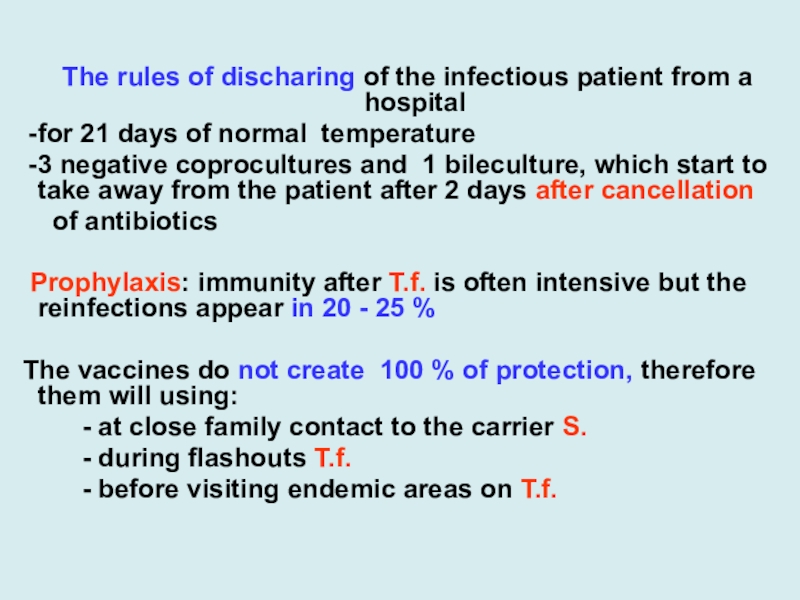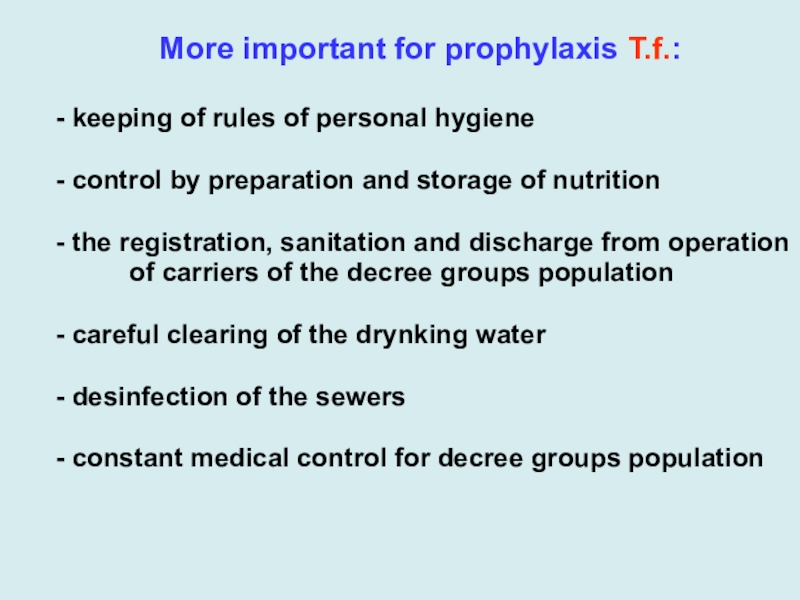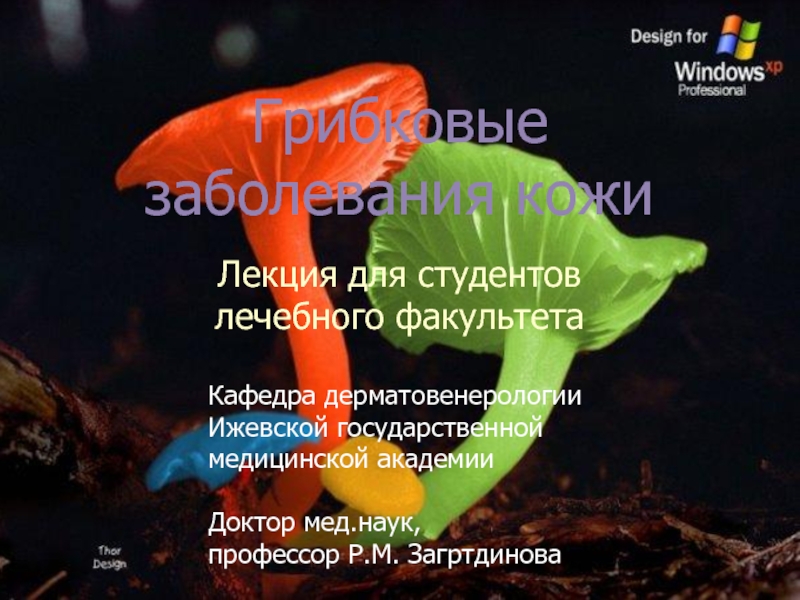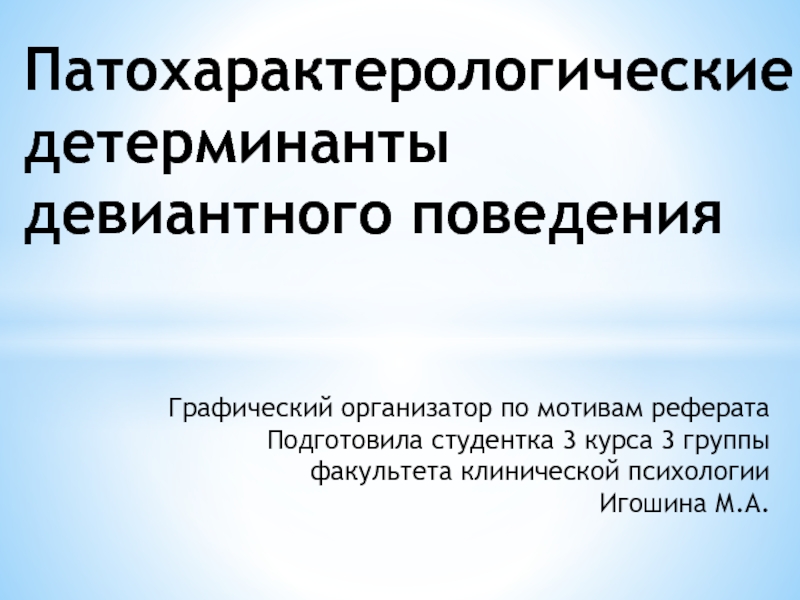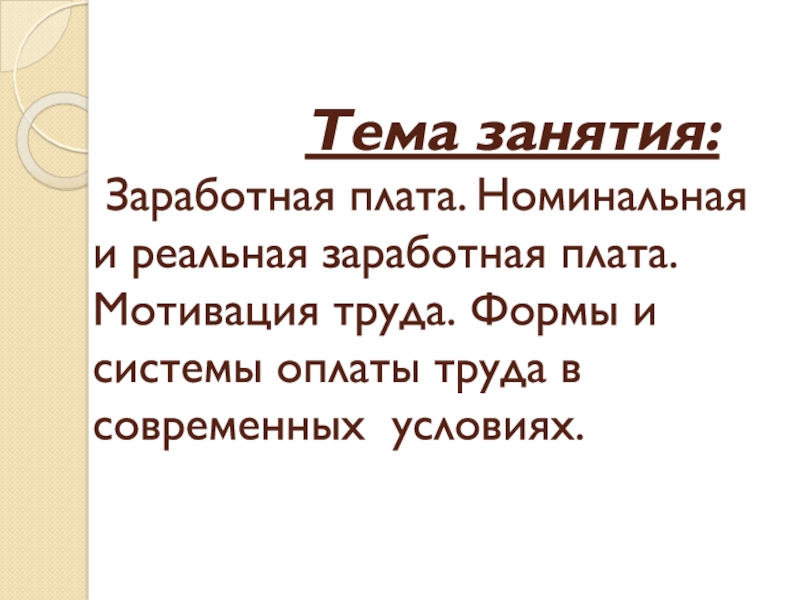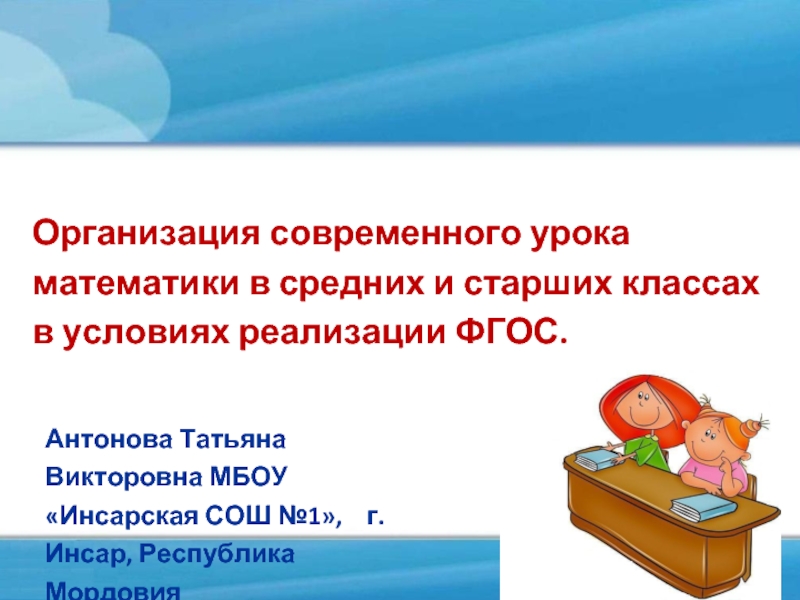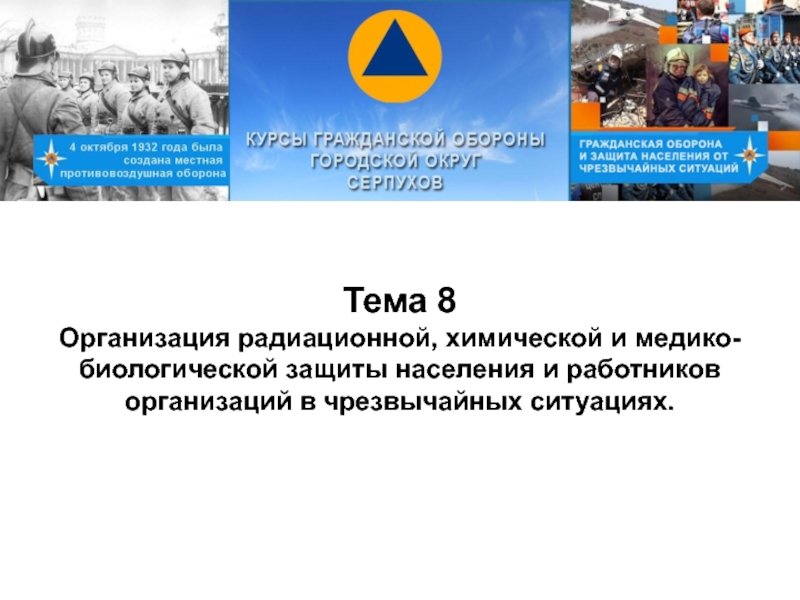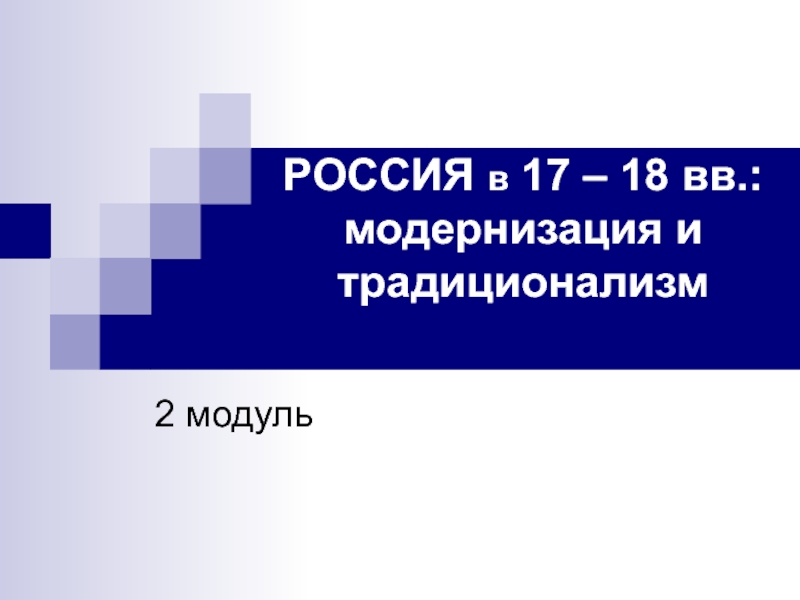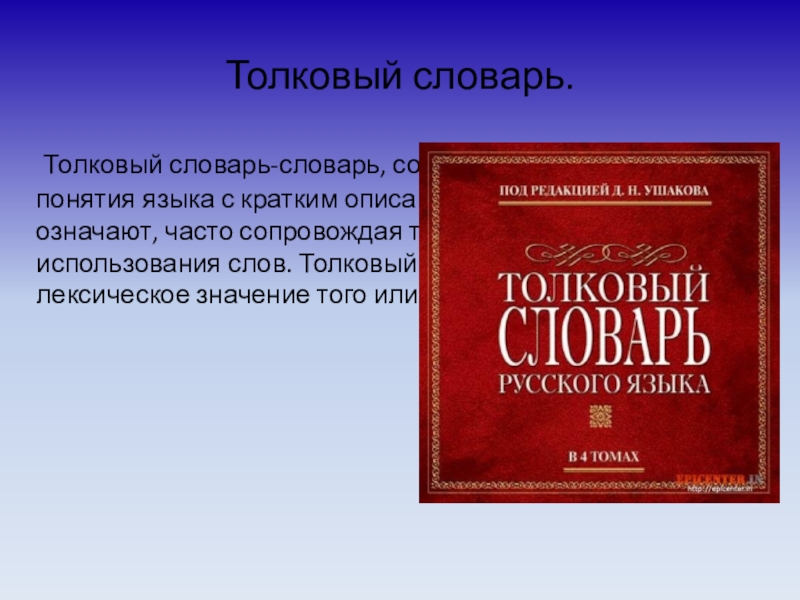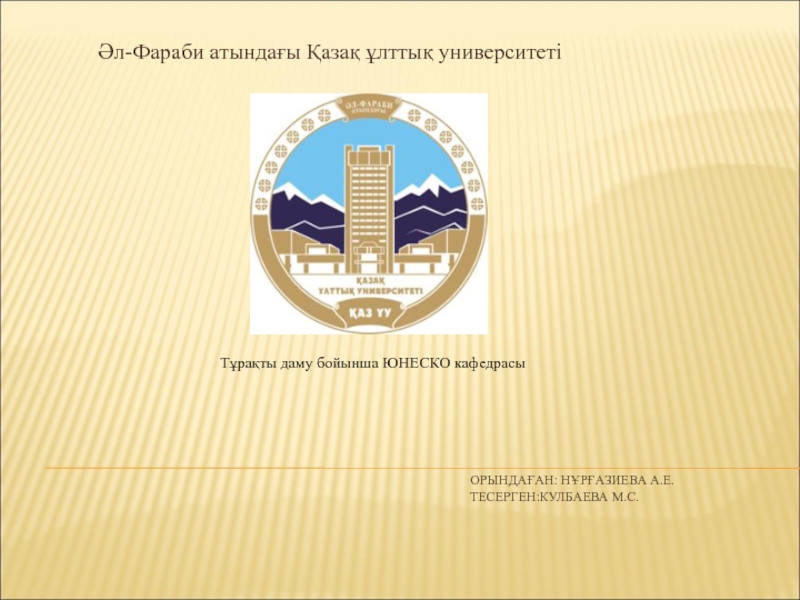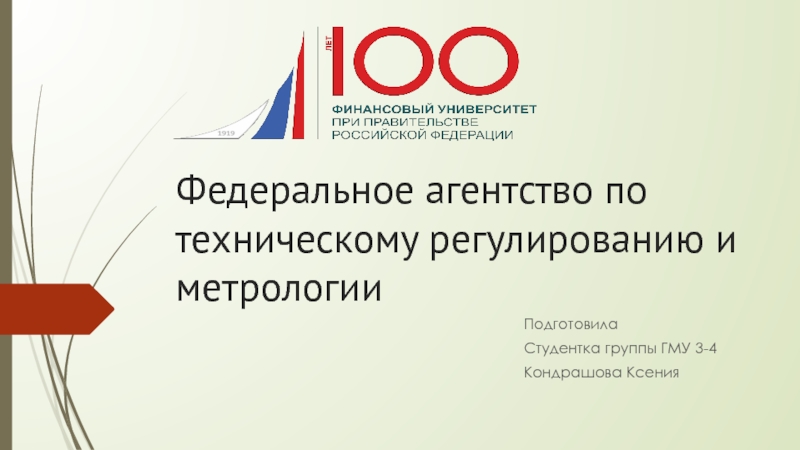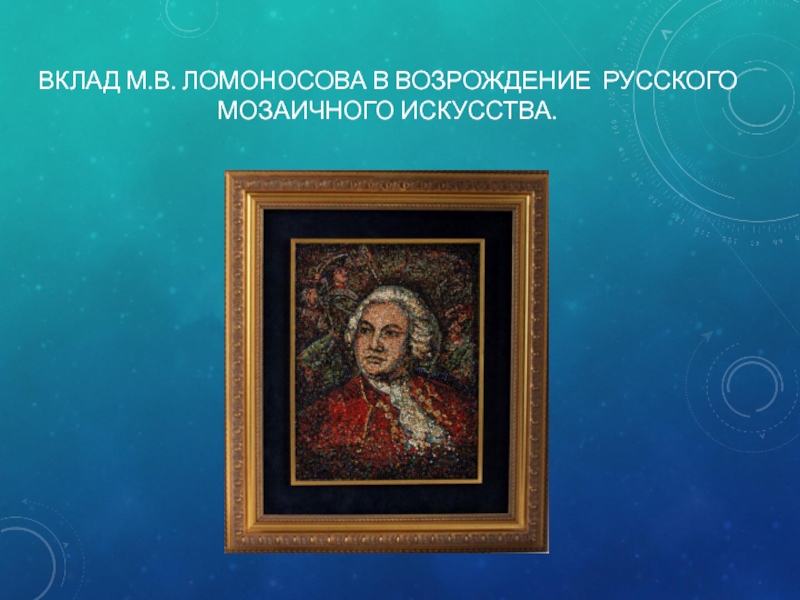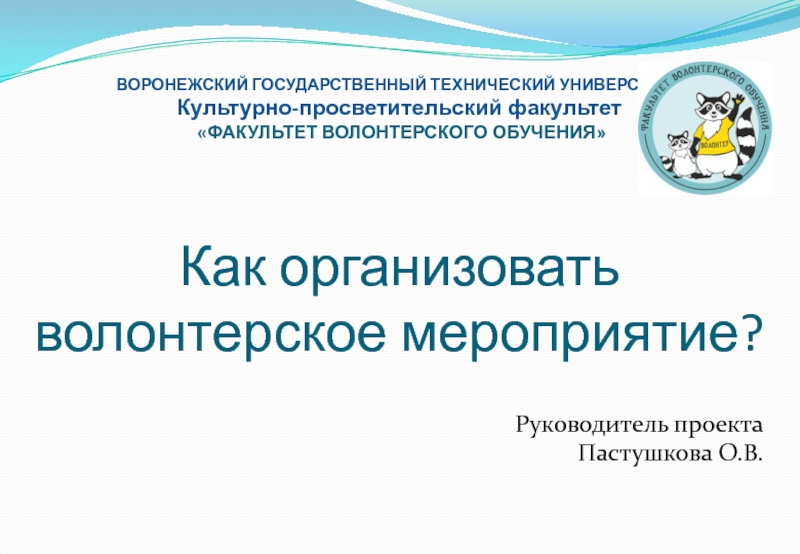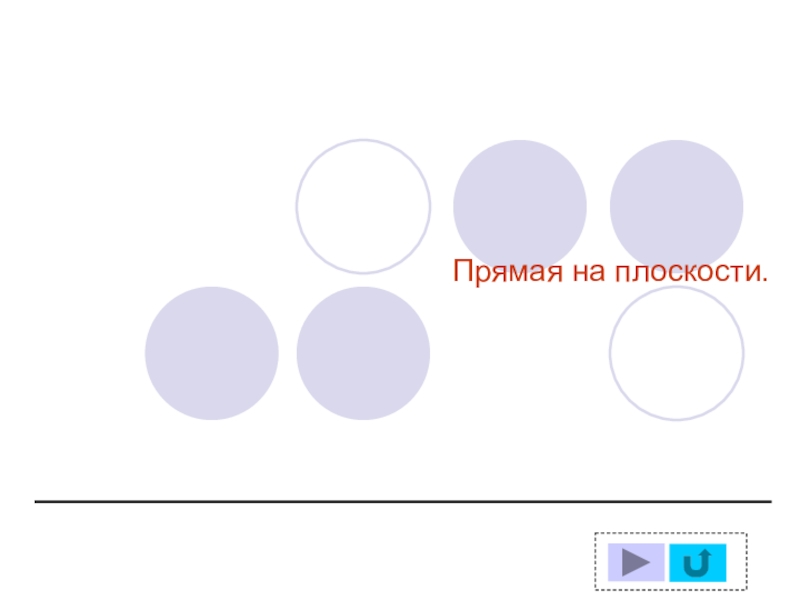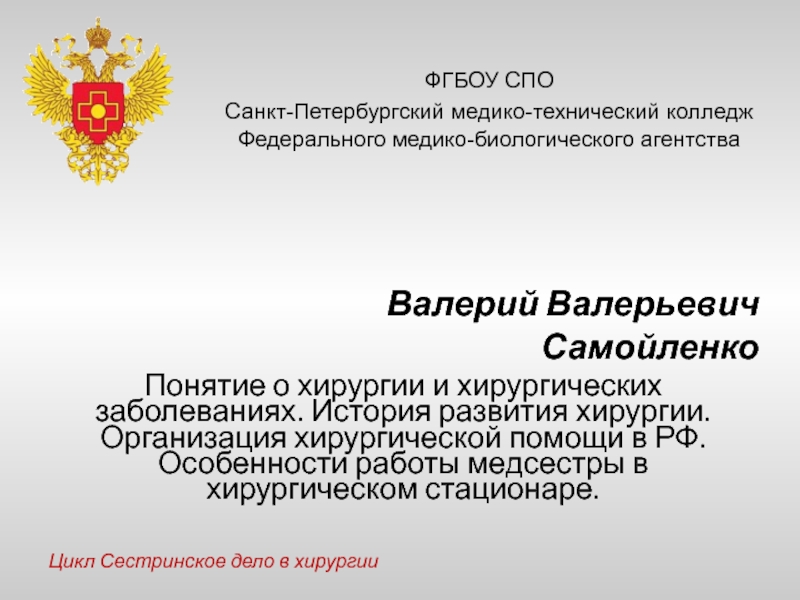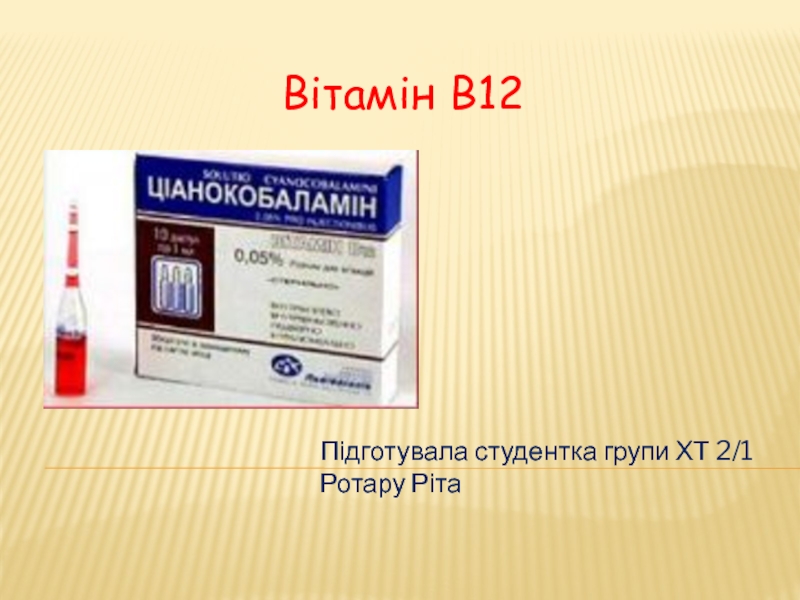Разделы презентаций
- Разное
- Английский язык
- Астрономия
- Алгебра
- Биология
- География
- Геометрия
- Детские презентации
- Информатика
- История
- Литература
- Математика
- Медицина
- Менеджмент
- Музыка
- МХК
- Немецкий язык
- ОБЖ
- Обществознание
- Окружающий мир
- Педагогика
- Русский язык
- Технология
- Физика
- Философия
- Химия
- Шаблоны, картинки для презентаций
- Экология
- Экономика
- Юриспруденция
General characteristic of infectious diseases with the faeco-oral mechanism of
Содержание
- 1. General characteristic of infectious diseases with the faeco-oral mechanism of
- 2. For diseases with the faeco-oral mechanism of
- 3. Causative agent can constantly be in intestine
- 4. To intestinal infections, behind exception helminthic invasion
- 5. Typhoid fever (Typhus abdominalis)
- 6. Historic reference:
- 7. ETIOLOGYThe causative agent of typhoid is Salmonella
- 8. Слайд 8
- 9. S. can longly be survived in
- 10. Salmonella typhi has 3 antigenes:
- 11. Epidemiology: typhoid fever is anthroponosisThe source –
- 12. Regions of earth with high risk infection
- 13. Pathogeny: Typhoid fever has of next stages
- 14. 3. Part S. attack leucocytes, which start
- 15. Слайд 15
- 16. 6.The parenchymatous dissimination of S. (2
- 17. - by cleaning in Peyer’s patches with
- 18. Period of convalescence (5 - 6 weeks
- 19. Pathomorphology - lymphatic nodes, liver, spleen, bone
- 20. Cliniccal manifestations The incubation interval of
- 21. Objective: - Inhibited and adynamic, the paleness
- 22. Height of illness: 1st – 2nd weeks
- 23. - excruciating headache and insomnia
- 24. Слайд 24
- 25. Слайд 25
- 26. - appearance for 55- 70 %
- 27. - skin acyanotic, dry, hot
- 28. - abdominal distention, meteorism, distinct s-m Падалки
- 29. Period of convalescence: 2 - 4 weeks.
- 30. The pneumotyphoid, colotyphoid, meningotyphoid - was installed
- 31. Слайд 31
- 32. S. carriage - is taped for 3-
- 33. Ricketsioses malaria brucellosis listerosis atypical pneumonias
- 34. Laboratory diagnosis - diagnosis confirms by:- coprocytogram-
- 35. - positive a urineculture – parallels
- 36. Treatment: - bed regimen (all feverish
- 37. - alternative remedies:, ceftriaxone- 2
- 38. Paratyphoid A –anthroponosis ( S. paratyphi A)-
- 39. plentiful, polymorphic exanthema with 4 - 7 days of illness
- 40. Paratyphoids B and C- zoonosis (animal and
- 41. The rules of discharing of the infectious
- 42. More important for prophylaxis T.f.: -
- 43. Скачать презентанцию
For diseases with the faeco-oral mechanism of
Слайды и текст этой презентации
Слайд 1
General characteristic of infectious diseases with the faeco-oral mechanism of
transmission .
and Paratyphoid A,B,CСлайд 2
For diseases with the faeco-oral mechanism of
transmission typically:
- specific localization of the causative agent in intestine determines its removing from the infected organism with faeces or vomiting mass.
- further it can penetrate into a susceptible organism, using ways of transmission (water, food, contact-household), including various factors of transmission ( foodstuff, water, hands, flies, household goods, toys, ground) which directly participate in carry of the causative agent from its source to susceptible persons
- in intestine the causative agent can be: in a lumen of intestine, in epithelium intestine, in a thickness mucous membrane of intestine, in lymphatic formations of intestine).
Слайд 3
Causative agent can constantly be in intestine (cholera, dysentery, some
helminthic invasion) or temporarily, penetrate from intestine in blood and
other bodies (ascariasis, amebiasis, strongyloidiasis, trichinosis, echinococcosis).Therefore allocate primary and secondary localization of the causative agent in an organism of the patient:
Typhoid fever ( Typhus abdominalis ) and Paratyphoid A,B, the causative agent multiplies in intestine ( primary localization ), but it, as a rule, will penetrate into blood and internal bodies (secondary localization),
The virus of a hepatites A - being multiplies in liver cells, will penetrate into intestine through bile ducts,
Enteroviruses- except for epithelium intestine, can will be multiplied in epithelium URT (secondary localization), that enable the causative agents to be allocated from an organism not only through intestine, but also through other bodies with urine, sputum, etc.
Слайд 4
To intestinal infections, behind exception helminthic invasion the tendency to
entire damage of the population is not peculiar. Even at
high morbidity rate in district many usually do not fall ill.Therefore continuous natural immunization at them is actually impossible. The level of morbidity as against acute infections of respiratory ways ( flu, measles) is regulated by contamination of the population. The natural immune section with rare exception (dysentery, VHA) influences on of morbidity rate a little.
Rise of morbidity rate coincides with the warm period of year. In moderate climatic zones of the earth it is registered during summery or autumnal time is more often
Слайд 5
Typhoid fever (Typhus abdominalis)
and Paratyphoid A,B,C
- typical disease with the faeco-oral mechanism of transmission.
Identification - typhoid fever is an acute anthro-ponosis systemic disease resulting from infection with S.typhi and accompanying by:
bacteriemia, fever, intoxication, abdominal discomfort, malaise,
spleenomegaly, damage of lymphatic derivations of a small intestine and mesenterial nodes, scanty roseolous rash
Слайд 6
Historic reference:
From times Hippokrates
(466 - 377 up to AD) to the18th
century
all diseases, which were accompanied by a fever and oppression or loss of consciousness were named by typhoids ( typhos – it is smoke, fog )1874 - Брович discovered of the causative agent the first time!
1876 - Н.И.Соколов discovered its in Peyer’s patches
1880 - K. Eberth - discovered its in a spleen and mesenterial nodes
1884 - G.Gaffky received of the agent in pure culture
1887 - А.И. Вильчур received its from a blood
1896 - M.Gruber revealed a phenomenon of an aggluti-
nation, and Widal G.F.I used this phenomenon
for diagnosis typhoid the first time!
Слайд 7
ETIOLOGY
The causative agent of typhoid is Salmonella typhi ( S.
) of:
family Enterobacteriacea,
genus Salmonella,
serogroup D, gram (-)
S. is
not spore-forming rod,has size 0.5 – 0.8 microns of width and 1.5 – 3 microns of length.
Motile by them betray flagella
<<< S. – in stage of cell-fission
Слайд 9
S. can longly be survived in an organism as
filtered or L- of the forms.
S. are survived by
months in environment. S. not only are longly survived, but also are multiplied in foodstuffs (milk, cheese, jelly, forcemeat etc.) and not changing their gustatory qualities.
S. well endure low temperature, but at warming up to 60 dg. C destroy them through 30 minutes and at boiling - instantly
S. are inactivated desinfectants in usual concentrations in during 3 - 5 minutes.
Слайд 10
Salmonella typhi has 3 antigenes:
- O-
antigene (somatic, heat- stable)
- Н-antigene (flagellar, heat- labile)
- Vi-antigene (somatic, heat- labile, is disposed more
superficially, than O - antigine)
The endotoxin of S. become frees only at bacteria
destraction.
It is potent pyrogen ( from its had received a medicinal
preparation "Pyrogenalum")
Endotoxin has no enteropathogenic by operation
Слайд 11
Epidemiology: typhoid fever is anthroponosis
The source – sick the persons
(20 – 30%) or the carriers ( 70%- 80%) which
secrete of S . typhi with a feces, urine, sputumTransmission is by the faecal-oral route
The factors of transmission:
- contaminated water (more often)
- contaminated foodstuffs (molluscs – oysters, mussels)
- contact to the sick the person or subjects enclosing
him
Age of majority of the patients: - from 15 up to 45 years ( more often are sick men )
Seasonal prevalence - in summer-autumn.
Слайд 12Regions of earth with high risk infection by typhoid fever.
Annually in the world are ill of Typhoid fever 20
million persons from which 800.000 dies.Слайд 13
Pathogeny:
Typhoid fever has of next stages of a course
of a infectious process:
1.Infection
Infectious a dose usually is
100.000 – 1.000.000 S., but may be smaller 1.000 S. It depends for resistance of the organism and pathogenic of the microorganism and by the numbur of ingested S. 2.Primary regional infection - (duration 1 - 3 weeks)
S. easily overcome low values рН of a stomach and get in a
small intestine.
The S. actively will penetrate in submucous space not damaging enterocytes also are spreaded into lymphatic derivations of small intestine, where occurs them reproduction and accumulation
.
Слайд 14
3. Part S. attack leucocytes, which start to work out
prostaglandin Е, causing a secretory diarrhoea.
The phagocytes may be
transport S. in other sites SMP ( system macrophagal of phagocytes ) because of the uncompleted phagocytosisOther part S. will already penetrate into a blood at this stage of illness, causing a short-term bacteriemia, which, however, results in a damage of many bodies of SМP
Bacteriemia and toxinemia (1st week of illness)
- is characterized by development of lymphadenites and lymphangites, by cerebriform bloating of Peyer’s patches and long bacteriemia with repeated drifts S. in bodies SMP.
Слайд 16
6.The parenchymatous dissimination of S. (2 - 3 weeks
of illness) It is characterized by a damage, practically, of
all internal bodies with creation in them of typhoid granulomas contened macrophages ( 90 % ) and of neutrophils ( 10 % ), toxic damage a CNS - central nervous system (typhous status), bone marrow (leukopenia), by appearance on a skin scanty roseolous of a rash.7. Excretory - allergic stage of illness: ( 2-3 weeks of illness)
It is characterized:
- by massive excretion of the S. through kidneys, cholic
track, crypts of an intestine, with a sputum
- by violation of microcirculation in capillaries with their
partial thrombosing, development of a coagulopathy
- maximal strain of immune processes
- by local allergic responses
Слайд 17
- by cleaning in Peyer’s patches with derivation of ulcers,
appearance of numerous necrosises of granulomas in bodies SMP.
8.
Creation of immunity and restoration of a homeostasis( 4-6 weeks of illness)
- intensifying antibody –
producing
- restoration of phagocytizing
activity of macrophages
- healing up of ulcers of an
intestine
Слайд 18
Period of convalescence (5 - 6 weeks of illness)
- normalization of microcirculation and restoration of the
functions the struck bodies- period of a self-healing of ulcers
- creation of immunity
Features of a bacteriemia at a typhoid:
- the bacteriemia is always inappreciable (less than 50 S. in
1 ml. blood )
- the endotoxin in a blood, practically, is not found out
- the endotoxin mainly renders local action, is especial in
places of a clumps S.
Слайд 19Pathomorphology
- lymphatic nodes, liver, spleen, bone marrow are pletoric
with the centers of a necrosis
- hyperplasia
of all bodies SMP with a proliferation of monocytes
- in a gall bladder the centers of an inflammation have focal
and nonconstant character
- in lungs are discovered the signs of a bronchitis almost
for all patients
- from any tissue of the perished is possible to find out S.!
Слайд 20
Cliniccal manifestations
The incubation interval of typhoid fever is
useally 9 - 14 days but it may be from
5 to 40 days. The duration of incubation interval depends in the number, virulence of ingested S, and state of a macrorganism.There are such periods during course of infectious process:
Initial:
- the fever accrues gradually for 2-3 days and reaches 39-
40dg.C ( Now 66 % of patients are ill acutely)
- headache increasing with each day
- inversion of dream (sleepiness–in the afternoon, insomnia–at
night)
- weakness, lowering of appetite, chilling, adynamia
- dynamic meteorism, constipation, sometimes short-term
secretory diarrhoea
Слайд 21
Objective:
- Inhibited and adynamic, the paleness of a skin
is (more often) or hyperemia of the face
- tachycardia
with change then on a relative bradycardia- lower of BP
- moderate respiration and dry rales
- coated and enlarged of tongue with impressions of teeth!!!
- abdominal distention and murmur in the right hypogastric area, local obtusion there of a percussion’s sound (s- m Падалка)
- enlargement of a liver and spleen - with 3- 4 days of illness
- WBC - moderate leukocytosis, but with 4 - 5 days of illness - leukopenia, eosinopenia , relative lymphocytosis and thrombocytopenia
- the changes of urine correspond – to syndrome " toxic" kidney.
Слайд 22Height of illness: 1st – 2nd weeks of illness -
fever of a constant type Wunderlich ( Боткина, Кильдюшевского )
Слайд 23 - excruciating headache and insomnia - « the typhous
status » - sharp weakness, adynamia, insomnia, apathy
+ inhibition, sopor, coma , the psychosis is ( seldom )Слайд 26 - appearance for 55- 70 % of the patients
with 8th - 10th days of illness
on a skin scanty roseolous rash (10 - 30 units) Can be repeated! - Icteric staining of a skin soles and palms ( s- m Филипповича )Слайд 27 - skin acyanotic, dry, hot - the lips dry
with scabs but herpes does not happen - weakness
of cardiac sounds, a bradycardia, dicrotism of pulse, lowering BP, systolic murmur at the heart apex - lungs - moderate respiration, dry rales - tongue coated patch from up white to brown colour and enlarged with impressions of teeth !!Слайд 28
- abdominal distention, meteorism, distinct s-m Падалки on the right
- delay of a stool, but sometimes phenomena of an
enteritis with a stool 2 - 4 time per day- increase of a liver and spleen
- lowering of a diuresis, distinct signs of syndromе a “toxic kidney”
- bleeding and perforation of the intestine are more often in this period!
Period of decrease manifestation of illness: (duration 1 week)
- step-by-step lowering of temperature of a body ( lytic )
- there leaves slowly headache and the dream is normalized
- is improved of appetite, refines and decreases tongue in sizes
- the liver and spleen is reduced, the diuresis is enlarged
Слайд 29
Period of convalescence: 2 - 4 weeks.
- step-by-step restoration
organs of the lost functions and disappearance of a astheno-vegetative
set of symptomsThe atypical forms of illness:
Abortive - the clinical pattern does not reach complete development, the fever more often keeps 7 - 10 days, and then is critically reduced, very seldom there is an exanthema, fast disappearance of an intoxication and other manifestations of illness
The erased form - "«out-patient" typhoid - intoxication the inappreciable, subfebrile fever 2 - 7 days, is very rare an exanthema, the changes of internal bodies are inappreciable also their function is not broken, a working capacity frequently is saved
Слайд 30
The pneumotyphoid, colotyphoid, meningotyphoid - was installed earlier at predominance
of a damage any of one body on a background
of main clinical manifestations T.f.Complications:
Specific
- Intestinal bleedings - 1 - 2 %
- Perforation of a wall of an intestine - 0,5 - 1,5 %
- TIS - 0,5 - 0,7 %
- The relapses (are more often through 2 - 3 weeks) 7 - 9 %
Nonspecific - pneumonia, osteomyelites, purulent arthritises, decubituses, abscesses, pyelonephrites, endophthalmias, meningitises etc.
Слайд 32
S. carriage
- is taped for 3- 5 % convalescents,
is more often for the persons with prior diseases of
a gall bladder- if the carriage is prolonged more than 3 months, more often it remains chronic
- virulent S. passing for carriers daily on GIT - not damaging its !
Differential diagnosis:
Typhoid shoud be considered in any patient with unexplained fever, especialy if there is a history of recent foreign travel to endemic areas!
Слайд 33
Ricketsioses
malaria
brucellosis
listerosis
atypical pneumonias
sepsis
miliary tuberculosis
ornithosis
lymphogranulomatosis
pseudotuberculosis
yersiniosis
tularemia (pulmonary or septic)
rhreumatic
feverhepatitis
lymphoma
mononucleosis
medicinal illness etc.
Слайд 34
Laboratory diagnosis - diagnosis confirms by:
- coprocytogram- leukocytosis (90 %
from them monocytes)
WBC – leukopenia of 3000 to 4000
cells + eosinopenia , relative lymphocytosis and thrombocytopenia
- positive immunofluorescence test with Vi- antigene
(express - method)
- inoculation 10 - 20 mls of blood (all period of a fever)
positive a bloodculture - in 1st week 70 – 90%
but in 3rd week of disease only 30- 40%
positive a coproculture - in 1st week - 10 -15 %
- in 3rd –4th, weeks -75%,
in 8th week -10%
and after 1 year onset of illness - 3%)
Слайд 35
- positive a urineculture – parallels the frequency
coproculture
- positive sputumculture - at clinic of a pneumonia or
bronchitis
- positive bileculture - during convalescence
after 8th day of illness
HA or IHA with O and Н by antigenes (titer 1:200)
with Vi by an antigene ( titer 1:160 ) but for carriers titer 1:5.
Investigation repeats after 10 days - increasing of titer fourfold confirms diagnosis!!
- positive enzymlinked immunosorbent assay (ELISA)
- positive PCR
Слайд 36
Treatment:
- bed regimen (all feverish period + 5
- 10 days)
- diet N 2 (about 5th
week - up to an adhesion of ulcers!!)Anti-infectious therapy:
- ciprofloxacin- 0,5g PO q12h - is the antibiotic of choice
- chloramphenicol 0.5-1.0 g PO q6h or IV 1 g q8h
After normalization of temperature dose reduces to 0.5g q6h PO
- ampicillinum 1 – 1.5 g PO q6h or IV and IM (effect slow,
than from chloramphenicol, but less often relapses)
- trimethaprim - sulphamethoxazole 960 mg PO q12h
- amoxicillin 25mg/kg q6h
Слайд 37
- alternative remedies:, ceftriaxone- 2 g/day ,ofloxacin- 800
mg/day, azitromicin-250-500-mg/day, cefoxim 400 mg/day and etc.
Duration of antibiotic treatment of 10- 12 days after normalization of temperature with step-by-step decrease of a dose - at a carriage - ampicillinum in a dose 40- 50 mg/kg PO
q6h by duration 4 - 6 weeks (efficiency 80 %),
- the subsequent cholecystectomia (efficiency 80 %)
Supporting therapy:
- desintoxication therapy PO or IV
- sufficient hydration PO or IV
- hemostatic therapy (intestinal bleedings)
- Glucocorticoids (ТIS)
- Antioxidants
- Antiferment drugs etc.
Слайд 38
Paratyphoid A –anthroponosis ( S. paratyphi A)
- the incubation interval
is reduced up to 8 - 10 days
more often
acute beginning with catarrhal by manifestations (nasal cold, cough)- scleritis, hyperemia of the face, herpes on labiums!!!
- fever is wavy or remittent with chills and sweating
- exanthema plentiful, polymorphic with 4 - 7 days of illness
- the intoxication moderate, typhous status does not develop
- to often proceeds in moderate to the form
- the complications same T.f. but are more often apperar relapses
Слайд 40
Paratyphoids B and C- zoonosis (animal and bird)
S. schotmulleri, S. hirschfeldii
-
incubation 5 - 10 days- acute beginning,chills, myalgia, sweating
- moderate intoxication
- frequently phenomena of a gastroenteritis by duration 3 - 5 days
- the fast uprise of temperature, but it wavy and is shorter than at T.f.
- exanthema polymorphic, plentiful with 4 - 7 days
- often give complications of septic character (meningocephalitis, septicopyemia etc.)
- in WBC is more often a neutrophilic leukocytosis
Слайд 41
The rules of discharing of the infectious patient from a
hospital
for 21 days of normal temperature
3 negative coprocultures
and 1 bileculture, which start to take away from the patient after 2 days after cancellation of antibiotics
Prophylaxis: immunity after T.f. is often intensive but the reinfections appear in 20 - 25 %
The vaccines do not create 100 % of protection, therefore them will using:
- at close family contact to the carrier S.
- during flashouts T.f.
- before visiting endemic areas on T.f.
Слайд 42
More important for prophylaxis T.f.:
- keeping of rules
of personal hygiene
- control by preparation and storage of
nutrition- the registration, sanitation and discharge from operation
of carriers of the decree groups population
- careful clearing of the drynking water
- desinfection of the sewers
- constant medical control for decree groups population
